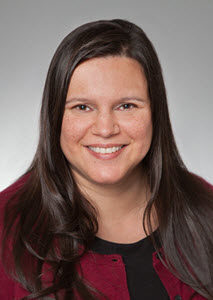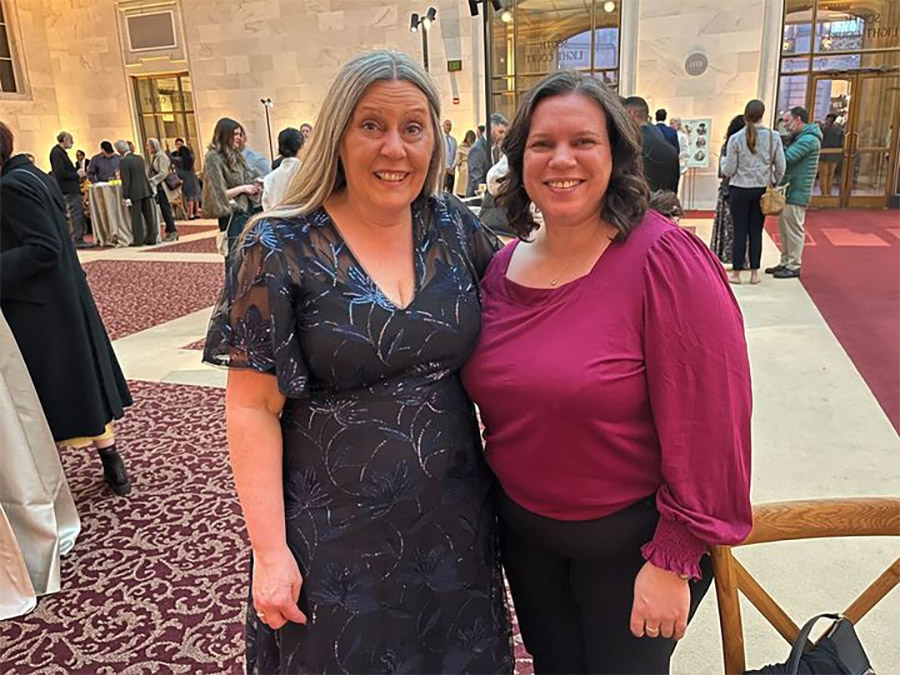Climate Action
Behind the Scenes at the Goldman Prize
May 13, 2025

Beatriz Woods, Communications and Internship program manager
Behind the Scenes at the Goldman Prize: A Diary of Grassroots Victory and Global Recognition

Last year, I was lucky enough to attend the 2024, Earthshot Prize ceremony in South Africa, representing EARTHDAY.ORG, EDO, in our capacity as a key nominator for this prize. Last week, I travelled to San Francisco for another prestigious award ceremony for the Goldman Prize so this trip was a little closer to home in
Every year the prestigious Goldman Prize awards $200,000 each to 6 winners globally who achieve environmental victories through grassroots organizing. Be it shutting down a coal plant poisoning the surrounding areas, or closing a plastics factory devastating local fishing communities — these are the sorts of incredible feats that earn Goldman Prize recognition and this year, we nominated the North American winner, Laurene Allen.
I inherited the prizes in 2021 when I took over the EDO internship program and, well, let’s just say I have a knack for picking — if not winners — at least finalists! In the past 3 years I’ve been working on Goldman, we’ve nominated 9 semifinalists, 2 finalists, and this year one of our nominees won.
How do we do it? At the risk of spilling our secrets, I’ll boil it down to year-round, incisive research. EARTHDAY.ORG’s interns are vital to the prize nomination process, from research and discovery to composing the nomination packets, and I assign ‘Goldman’ hunting to a couple of specially selected interns each semester to work alongside me in these efforts. They approach the research from multiple angles, and it was a brilliant intern who found Laurene in 2023’s search.
That’s the backstory of the picking process – now, here’s what it is like to be there in person, supporting Laurene as she accepts one of the world’s most prestigious environmental prizes.
Day 1: Saturday, April 19
Location: San Francisco
Mood: Excited
I’m the type of person who likes to travel early, so my plane left at 7am on Saturday and I landed (with my luggage this time unlike when I flew to South Africa!) at 10am Pacific time. Much to my delight, I was able to meet up with another intern, Dory Miller, , who lived close enough to San Francisco she could meet me for lunch.
Being able to meet her in person was never anything I expected to happen when I hired a remote intern in California, and I brought her a Canopy Project Earth Day t-shirt. It was genuinely lovely to spend some time together and thank her for all her hard work and unpaid work.
That night, to end the day with some humor, I hit a small comedy show at a comedy club an acquaintance told me about a week earlier and then after a lot of much needed laughing- I hit the sack early.
Day 2: Sunday, April 20
Location: San Francisco
Mood: Inspired
My first official meeting of the prize events was lunch with Laurene on Sunday. The Palace Hotel where she was staying had a closed restaurant for an Easter event, so we went to a casual place a couple of blocks away. Fortunately, it was a quiet venue so I could hear Laurene tell her story.
Laurene told me how she started with no formal background in science or environmental policy, just a fierce determination to protect her town after learning that toxic PFAS chemicals had been leaching into the water for years. What began with a single community meeting and a sense of outrage quickly grew into a full-scale campaign. She co-founded Merrimack Citizens for Clean Water, held monthly organizing meetings in her home, knocked on doors to gather health data, and even discovered that the state’s early public communications were taken directly from industry sources. When official responses fell short, she kept pushing, testifying at state hearings, challenging air permits, and confronting both corporate and government resistance head-on.
Her persistence helped uncover the full extent of the contamination, eventually leading to the plant’s closure in 2024. But Laurene didn’t stop there — she recruited local leaders to run for office, helped transform New Hampshire into a national leader on PFAS regulation, and built relationships with universities and national coalitions to amplify the cause. Her efforts not only forced a powerful multinational to leave town, but also spotlighted the broader fight against “forever chemicals” across the U.S. Sitting across from her at lunch, I was struck by how one person’s refusal to back down had reshaped public health policy—and how much further she’s still determined to go.
There are so many impressive elements to her 8-year epic battle, but I think what hit me most is that it was never her “job” to go so far, and do so much. She did all of this *on her own time* and her own drive combined with concern for her community — attending meetings, diving deep into scientific reports to be able to rattle off the chemistry and effects of PFAS without taking a breath. She is now a recognized expert at the national level, and she talked about her work with coalitions throughout the country to continue the fight.
Infuriatingly, plastic companies are trying to weasel their way out of regulation by activating definition loopholes for PFAS and other plastics, claiming their goods aren’t the same chemistry as the bad chemicals. But because Laurene and her allies are so in-the-know on their issue, they continue to expose the connections among the deadly plastics and their effects on human health, regardless of what hairs the corporations are trying to split.
After lunch, I decided to walk the 5 blocks back to the hotel, because of course the weather was ideal.
Day 3: Monday, April 21
Location: San Francisco Opera House and City Hall
Mood: Buoyed
I was up early for west coast time for an east coast meeting, and spent a low-key day before gearing up for the event at the Opera House. I’d been told, “full suits to Birkenstocks” as attire, so I opted for more business than dressy and got there well before the 5:30pm start time.
The ceremony was short with a video recounting each of the winners’ stories. They all rallied their communities to protect rivers, indigenous land, the ocean, and demand justice. The stories were moving — each one a reminder that environmental victories aren’t handed down from above, they’re fought for from the ground up.
The room was filled with emotion, standing ovations, and some tears. It was clear that these weren’t just individual wins; they were triumphs for entire communities, and in some cases, for future generations.
After the ceremony was the reception at City Hall — and I was invited to the VIP bit of it. The food was international and delightful: sushi, baked salmon, Mediterranean canapes, and I topped it off with a strawberry lemonade. As for networking, well, I rolled with advantage, having nominated a winner this year along with a history of hits. Among the luminaries I met, and connections I made, I was introduced to Michael Sutton of the Goldman Environmental Foundation.
With an early morning flight scheduled, I headed back to the hotel early.
Day 4: APRIL 22nd – Earth Day
Location: Up in the air
Mood: Busy
I spent Earth Day on the internet on a plane (ah, the joys of technology, Gen Z has no idea how good they have it compared to the 80s/90s), sending emails and keeping abreast of any breaking news as the day marched on across time zones.
I flipped through my new LinkedIn connections, and planned my connections as I returned home. Another trip under my belt, thanks to the prizes, but I was relieved to be headed back to DC.
The sun might have set on Earth Day 2025, but the work doesn’t stop on April 23rd. EARTHDAY.ORG invites everyone into the environmental movement in April, and taps into that renewed commitment to the planet through the other 11 months out of the year. Leveraging our unique brand and position as the megaphone for the movement, EARTHDAY.ORG works for everyone through our year-round initiatives such as The Great Global Cleanup, The Canopy Project, Fashion for the Earth, and Climate Education.
We usually end our articles with a call to action, and today I’d like to plug the internship program. Taking on the internship program was one of the more surprising yet gratifying developments of my career at EARTHDAY.ORG, and as you can see, our interns are given *real* work. I’m so proud of the resume bullet points we develop together, and I know it’s my job to help them get that next role.
If you know an undergraduate student interested in an unpaid internship (we do offer help with credit if your institution supports it), you can find out more here. There’s writing galore, even some data work thrown in, with a smattering of outreach and vital research. The tasks are varied, and all of them support interview questions.
To apply, ask the applicant to send a resume, a two paragraph intention statement detailing their experience and what they hope to get out of an internship, and a writing sample (journalistic or persuasive although the first two pages of a research paper will suffice if they don’t have the requested) to [email protected] with the subject line [semester] internship – [last name]. Make sure to tell them to say in the email they were referred by this article, and I’ll follow up.
Note: The Summer 2025 cohort is filled. Any applications received will be considered for the fall semester.